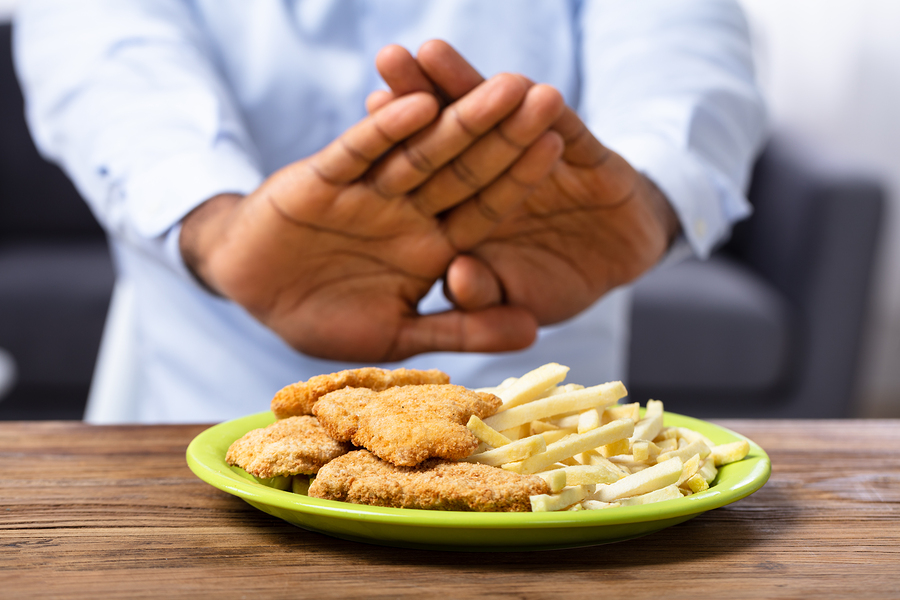Are you trying to lose those extra few pounds? Do you want to do it on a diet plan that works and is actually easy to follow? Well, then intermittent fasting is just the thing you need!
Even though fasting isn’t a new concept (people have been restricting their diet for centuries, mainly for religious reasons), intermittent fasting literally exploded in the past few years. 2018 was a huge year for this eating plan and 2019 is expected to be even bigger. But, what it is intermittent fasting and how can you benefit from it? Here’s a thorough guide on this eating method that will make 2019 your year of fitness!
What is intermittent fasting?
First of all, even though most people refer to intermittent fasting as a diet, it’s not actually a diet. It doesn’t dictate WHAT to eat, but WHEN to eat. Essentially, intermittent fasting is a pattern of eating or a process of cycling through periods of eating and periods of not eating, so the only thing you restrict is the time period at which you take your calories in order to get the most out of them.
If it sounds super complicated, don’t worry. The next part will make it all much clearer.

What are the eating and not eating periods?
There are several different methods of intermittent fasting. There’s 5:2 method, eat-stop-eat method and 16/8 method. Let’s see what they include:
5:2 method includes normal eating five days a week. Two remaining days is when you fast, but still eat a little. The goal is to keep your calorie intake during your fast days between 500 and 600. You can choose any two days of the week to be your fast days and some tweaking and experimenting will be needed.
Eat-stop-eat method includes restricting all food intakes for 24 hours. You can do this total fast once or twice a week according to your preferences.
16/8 method is probably the most common one with already hundreds of Google searches in 2019. It’s also the easiest one to handle and can be done by literally anyone (it’s also my preferred method of intermittent fasting).
It includes eating all your daily calories over a period of 8 hours and fasting for the remaining 16. You can do this every day or a few times a week and you can opt for some variations of the pattern and try 18/6 or 14/10 method.
How does it work?
In order to figure out why and how intermittent fasting helps fat loss, we need to establish the difference between the fasted and fed state.
When your body is in the “fed state” it means it’s absorbing nutrients and digesting food. This period usually starts right after you start eating and lasts well after you finish your meal, usually three to five hours (this is how long normal absorption and digestion lasts). In the fed state, your body has a very hard time to burn fat because your insulin levels rise as you take food.
After the fed state, your body enters a so-called post-absorptive state. It sounds fancy, but it actually only means that your body isn’t busy processing any food. This state lasts anywhere from 8 to 12 hours after your last meal after which you start the fasted state. When in the fasted state, your body has a much easier time burning fat than in the fed state thanks to the low insulin levels.
Because we usually rarely go without food for 12 hours after a meal, our bodies don’t even get to reach the fat burning state before we ingest another portion of food. That’s why we must change our eating habits, ditch carbs and monitor portion sizes to lose weight—you know, go on a diet. But, intermittent fasting allows you to lose fat without making any changes to what and how much you eat and how often you hit the gym.
Why should I try it?
Well, it’s a shame people only now realise that intermittent fasting is amazing. It simply makes sense, even from an evolutionary standpoint. During the big part of human history, we weren’t eating three meals and two snacks a day. Humans evolved to withstand periods when the food was scarce and they learned to thrive in those fasted states.
Luckily, we don’t have to go hunting for our next meal anymore (that might actually be a great idea for weight loss and a good solution to farming issues we face), but that also means we spend too much time without any physical activity while loading on calories even though our bodies are designed for a different kind of life.
But, by switching to intermittent fasting, you can go back to those ancient times, improving your performance and reaping a number of amazing benefits. Fasting boosts weight loss and increases energy levels. It also increases cellular repair and makes our cells more resilient.
Additionally, it’s great for people who have cholesterol and fall into a type 2 diabetes risk group because it lowers bad cholesterol and reduces insulin resistance. On top of that, intermittent fasting keeps you protected from Alzheimer’s and Parkinson’s disease and does wonders for brain function and memory. All in all, fasting will keep you fit, happy and healthy!
What’s the best way to do it?
You might feel a bit overwhelmed with information right now, but if you’re determined to really stay dedicated to your weight loss in 2019, here’s the best way to fast. Since depriving yourself of food isn’t exactly fun, I recommend starting with the easiest type: 16/8 or 18/6 style fast.
Eat your two meals in an 8-hour or 6-hour window and you’ll have a nice and long 16 to 18 hours of fast. One of the keys to successful intermittent fasting is experimentation to see what fits you the best, but most people have no troubles with fasting every day.
If you decide to skip breakfast, you can try drinking a strong cup of coffee in the morning, so that you don’t run on empty. And, because it’s sugar- and carb-free, you’ll stay in a fasted state and power through your morning with ease. Try it for two weeks and see how you feel when compared to normal breakfast—it’s all about experimentation.
If you’re going to work out while fasting (it’s not actually necessary for weight loss, but it certainly helps), most experts agree that it’s best to do your workout just before you break your fast. You might also want to stay away from snacking between meals, and instead, have a generous high-fat, low-carb and moderate-protein lunch around 2 pm.

It will give you plenty of energy and you won’t even feel hungry at all. You can also load up on super-foods. 2019 will the year of kiwi and golden berries, but there’s another super-food that will blow up this year—cassava root. It’s a great substitute for grains or other starchy root veggies and can be used in gluten-free baking.
All in all, intermittent fasting is one of easiest ways to shed extra pounds while retaining muscle because it requires minimal lifestyle changes. It’s both effective and easy, so you’ll certainly stick to it even after you reach your desired weight!
If you need more tips or advice, you can always contact your local nutritionist for counselling.

